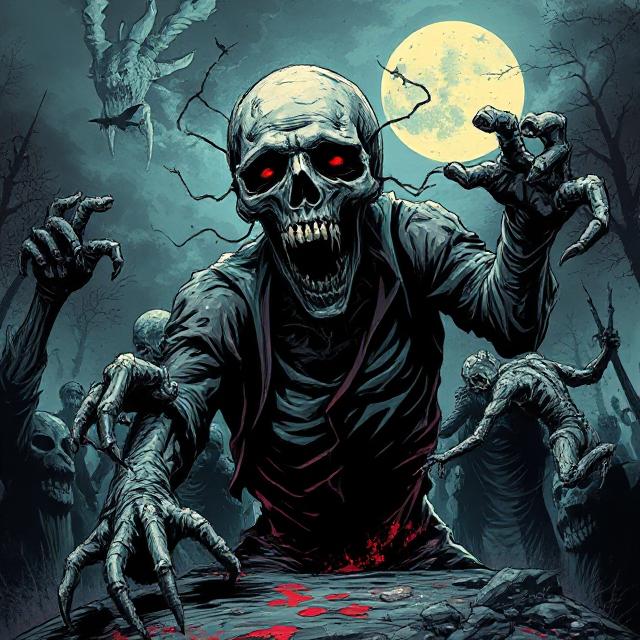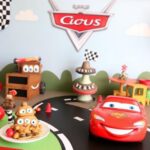Introduction to Zombie Artwork
Zombie artwork has become a compelling and versatile genre within the broader realm of horror art. From gritty comic book illustrations to elaborate sculptures and digital paintings, zombie art captures the imagination by blending horror, fantasy, and often social commentary. But how does zombie artwork work? What techniques, themes, and cultural factors contribute to its effectiveness? Let’s explore the mechanics behind zombie art, its artistic elements, cultural significance, and the creative process that brings these undead visions to life.
The Origins and Cultural Roots of Zombie Art
Before delving into how zombie artwork works, it’s essential to understand its origins. The concept of the zombie originates from Haitian folklore, where it describes a reanimated corpse under the control of a sorcerer. Western pop culture, however, popularized the zombie as a symbol of apocalyptic fears, consumerism, and societal collapse, especially through films like George A. Romero’s Night of the Living Dead.
This cultural shift transformed zombies from mystical beings into symbols of societal anxieties. Artists tapped into these themes, using zombie imagery to explore fears about mortality, disease, and the collapse of civilization. Over time, zombie art expanded from horror illustrations to include satire, social critique, and even humor, reflecting the genre’s versatility.
Visual Elements and Techniques in Zombie Artwork
Zombie artwork employs specific visual elements and techniques that evoke fear, fascination, and empathy. Here are some of the core components:
- Color Palette: Artists often use muted, sickly tones such as greens, grays, browns, and reds. These colors evoke decay, rot, and blood, reinforcing the grotesque nature of zombies. Bright, contrasting hues might be used selectively to highlight wounds or eyes, drawing viewers’ focus.
- Texture and Detail: The decayed, rotting flesh of zombies is depicted with meticulous detail—exposed bones, torn clothing, maggots, and open wounds. Texture is key; artists use shading and fine line work to create a visceral sense of decay.
- Anatomy and Deformation: Zombies often have distorted anatomy—limbs twisted out of shape, missing parts, or unnatural postures. This exaggeration heightens the uncanny effect, emphasizing the unnaturalness of their existence.
- Expressions and Eyes: The eyes of zombies can range from vacant and soulless to intensely hungry or aggressive. These facial cues communicate emotion—or the lack thereof—and influence the viewer’s emotional response.
- Composition and Movement: Dynamic compositions depict zombies in motion—reaching, staggering, or attacking—creating a sense of chaos and urgency. Artists position figures to lead the viewer’s eye across the scene, heightening tension.
Themes and Symbolism in Zombie Art
Zombie art isn’t just about gore; it often encompasses deeper themes and symbolism:
- Decay and Mortality: Zombies embody the inevitable decay of the human body, prompting reflections on mortality and the fragility of life.
- Loss of Humanity: The transformation from human to zombie symbolizes the loss of individuality and morality, raising questions about identity and consciousness.
- Societal Critique: Zombies are frequently used as metaphors for consumerism, mindless conformity, or societal collapse. Artworks may depict hordes of zombies representing societal fears of dehumanization.
- Resilience and Survival: Some zombie art focuses on human resilience, depicting survivors fighting or coexisting with the undead, highlighting themes of hope and perseverance amidst chaos.
The Creative Process Behind Zombie Artwork
Creating compelling zombie art involves a combination of technical skill, imagination, and thematic understanding. Here’s a typical process artists might follow:
- Conceptualization: Artists start with an idea—whether inspired by horror movies, personal fears, or social commentary. They sketch rough compositions focusing on mood, scene, and character design.
- Research and Reference Gathering: To depict realistic decay, injuries, or anatomy, artists collect references from photographs, medical illustrations, or real-world decay.
- Sketching and Composition: Detailed sketches establish pose, perspective, and scene dynamics. Composition choices—lighting, focal points, background—are crucial for narrative impact.
- Color and Texture Application: Using mediums such as digital painting software, traditional paints, or mixed media, artists add color and texture. Digital tools allow for layering, shading, and fine detail work.
- Refinement and Detailing: Final touches involve adding details like blood splatters, wounds, and rotting flesh, and adjusting lighting to enhance mood.
- Presentation and Context: Many zombie artworks are part of larger projects—comics, films, or exhibitions—where context amplifies their impact.
The Impact and Reception of Zombie Art
Zombie art’s popularity stems from its visceral appeal and its capacity to evoke strong emotional reactions. Its impact relies heavily on visual shock, empathy, and thematic resonance. When done effectively, zombie artwork can disturb, entertain, and provoke thought simultaneously.
Moreover, zombie art has permeated pop culture, inspiring fans, collectors, and artists alike. Conventions, galleries, and online platforms serve as outlets for showcasing zombie-themed creations, fostering a community that appreciates both the horror aesthetic and the underlying themes.
Conclusion
Zombie artwork works through a combination of visual techniques, thematic depth, and cultural symbolism. It leverages color, texture, anatomy, and composition to evoke visceral reactions, while also serving as a mirror for societal fears and philosophical questions about mortality, identity, and resilience. Whether as a form of horror entertainment or social commentary, zombie art remains a powerful and enduring genre that continues to evolve, challenging artists and audiences to confront the boundaries between life, death, and the undead.
If you’d like to explore or create your own zombie artwork, numerous digital tools and tutorials are available online to help you develop your skills and bring your undead visions to life.



